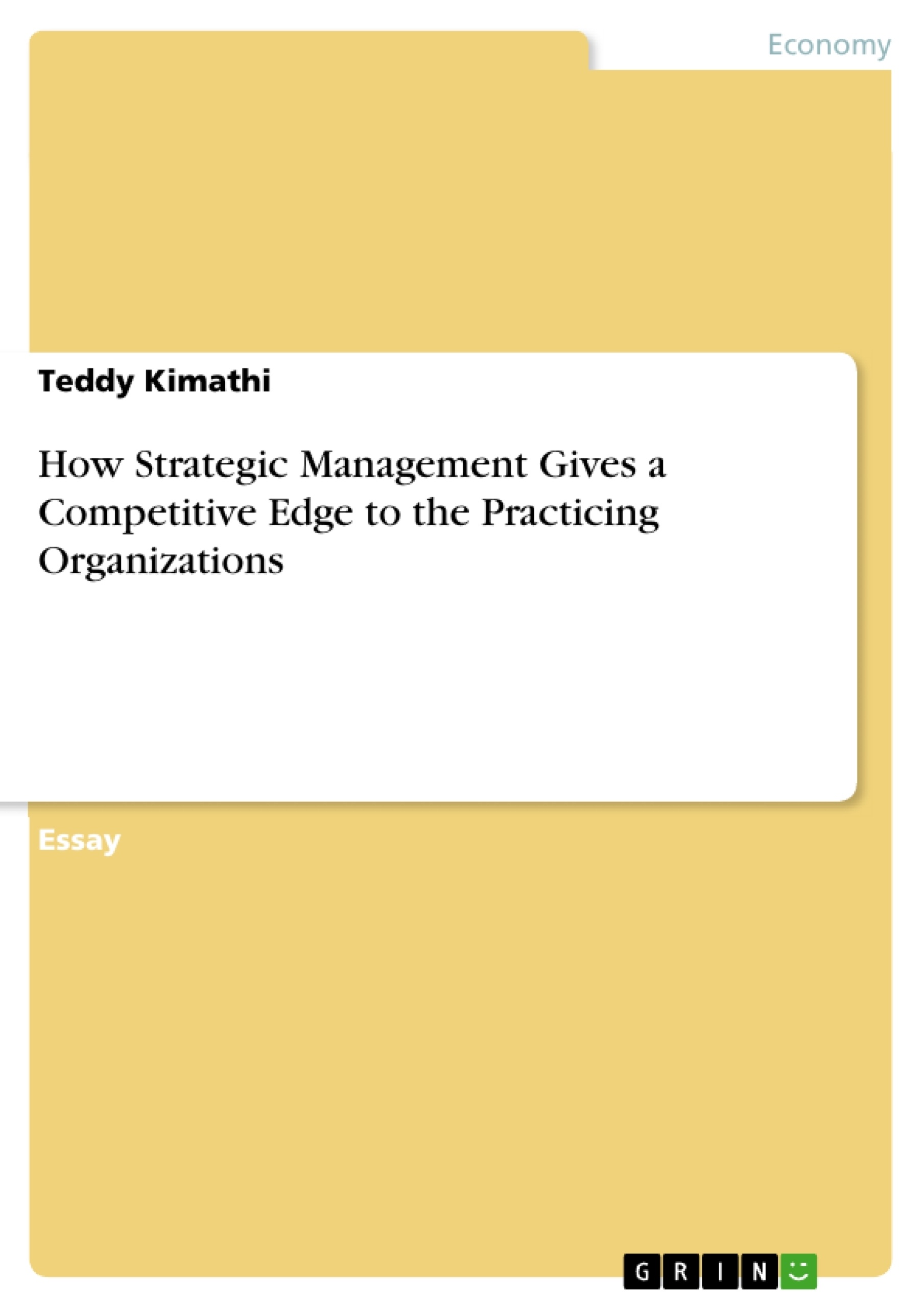This academic paper provides a well-detailed diagnosis, forces and steps by which strategic management gives a competitive edge to the practicing organizations. Strategic management as a subject has therefore been simplified in this paper, to make it easy for a business-related student to understand the essence of strategic management in business organizations.
Strategic management is a broad subject which has been summarized in the area of competition, so as to give important and realistic collection of concepts, ideas and theories which are applicable in various organizations.
Table of Contents
- HOW STRATEGIC MANAGEMENT GIVES A COMPETITIVE EDGE TO THE PRACTICING ORGANIZATIONS
- The Concept of Driving Forces
- The Kinds of Driving Forces and How They work
- Changes in the long-term industry growth rate
- Changes in who buys the product and how they use it
- Product innovation
- Process innovation
- Marketing innovation
- Entry and exit of major firms
- Diffusion of proprietary knowledge
Objectives and Key Themes
This text aims to explore how strategic management can provide a competitive edge to organizations, particularly in the context of industry evolution and change. It delves into the dynamics of industry structure, analyzing how forces within and outside of the industry shape competition and influence the success of organizations.
- Understanding the concept of driving forces in industry evolution
- Analyzing the impact of various driving forces, such as changes in growth rate, product and process innovation, and market entry and exit
- Identifying how strategic management can be used to capitalize on opportunities and mitigate threats presented by industry changes
- Examining the importance of understanding an industry's life cycle and its impact on competitive dynamics
- Assessing the role of proprietary knowledge and its diffusion in shaping industry structure and competition
Chapter Summaries
The initial section provides a framework for understanding strategic management within the context of competitive advantage. It emphasizes the need for a thorough analysis of industry structure, competitive dynamics, and the organization's own internal capabilities.
The text then introduces the concept of driving forces, arguing that industries are not static entities but constantly evolve due to various external pressures and internal changes. The chapter provides a theoretical framework for understanding industry life cycles and the potential for industries to deviate from the "typical" evolutionary path.
The main chapter delves into the specific types of driving forces, outlining their impact on industry structure and competition. These forces include changes in industry growth rate, product and process innovation, marketing innovations, entry and exit of major firms, and the diffusion of proprietary knowledge. The chapter provides numerous examples to illustrate these forces and their effects on various industries.
Keywords
The primary keywords and focus topics in this text include strategic management, competitive advantage, industry structure, driving forces, industry evolution, industry life cycle, product innovation, process innovation, marketing innovation, entry and exit, and proprietary knowledge. The text also examines how these factors influence the competitive dynamics of industries and the strategic decisions of organizations.
- Citation du texte
- Teddy Kimathi (Auteur), 2008, How Strategic Management Gives a Competitive Edge to the Practicing Organizations, Munich, GRIN Verlag, https://www.grin.com/document/380480



